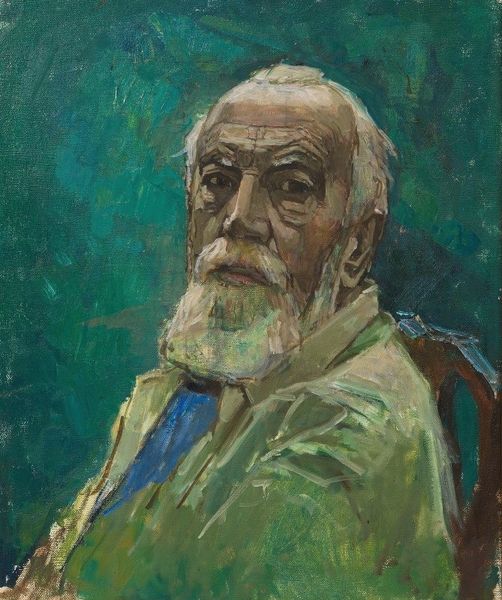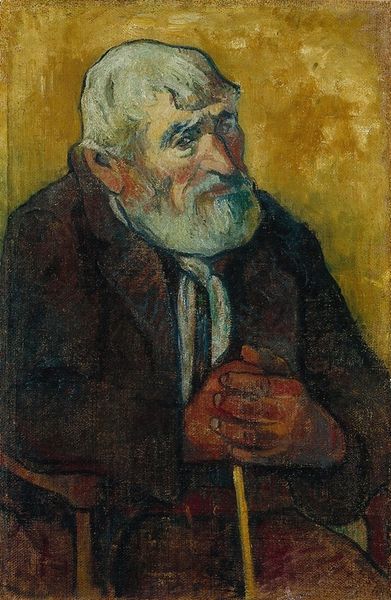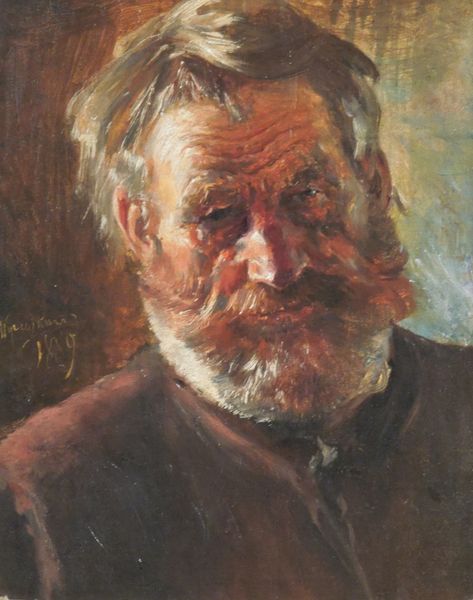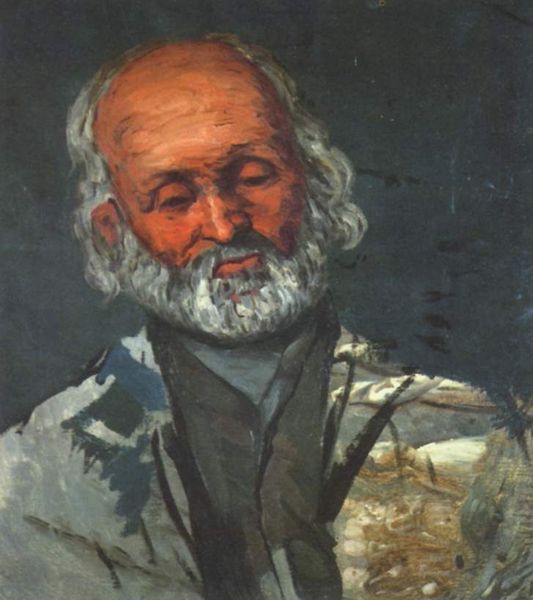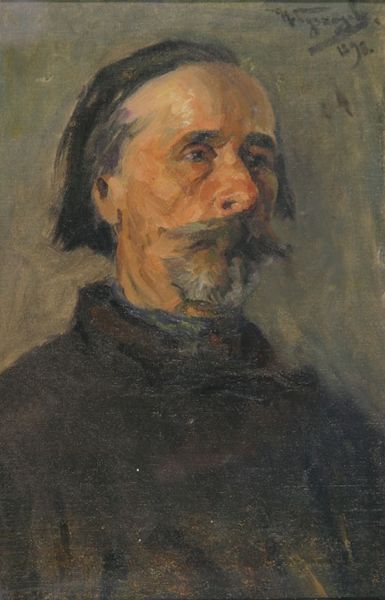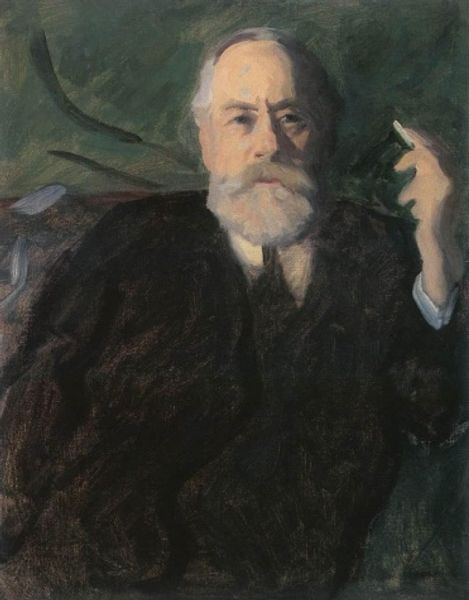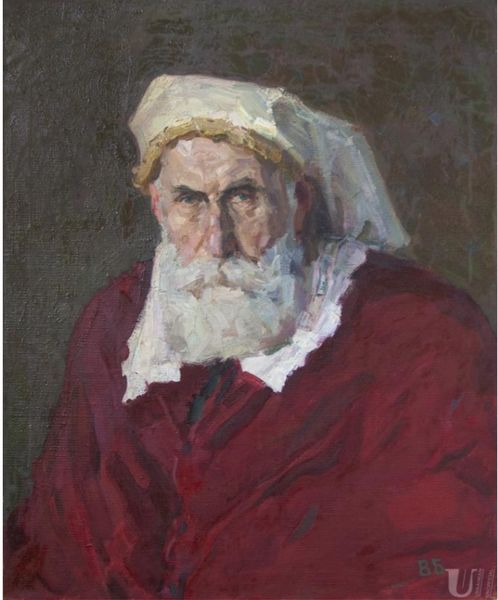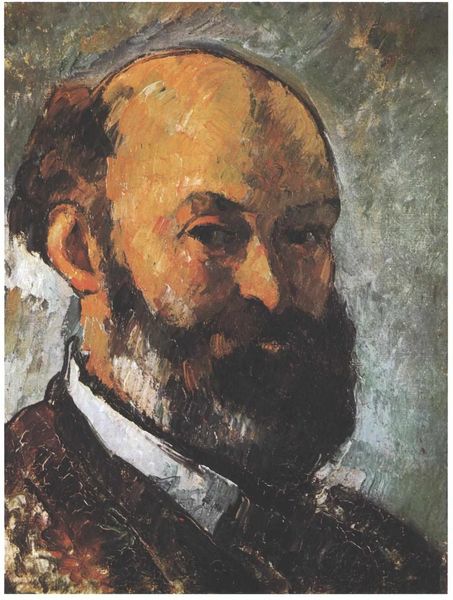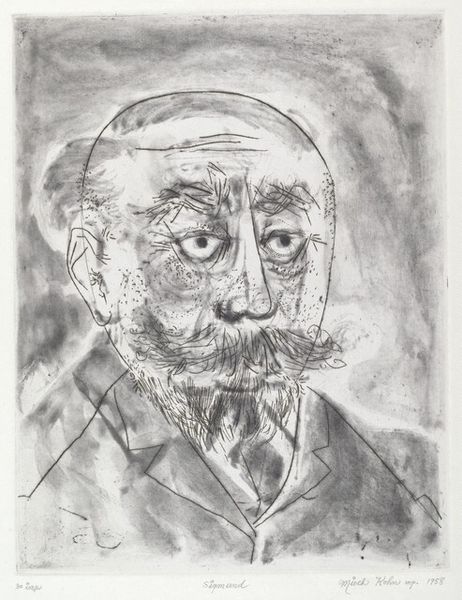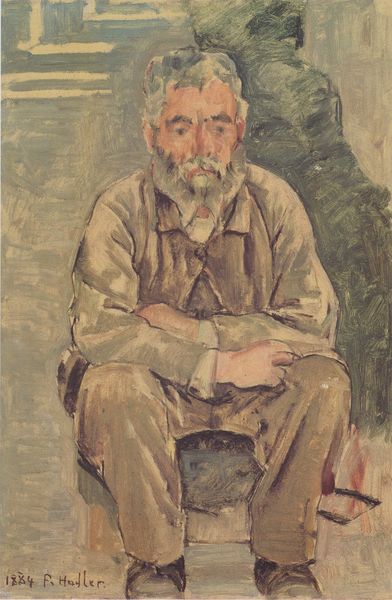
Copyright: Public Domain: Artvee
Editor: This is Walther Gamerith's "Bildnis eines alten Mannes," or "Portrait of an Old Man," painted in 1949 using oil paint in a matter-painting technique. The heavy impasto gives it a rough, almost sculptural quality. There's a weariness to the subject that's immediately apparent. What strikes you when you look at it? Curator: Weariness, yes, but also an almost stubborn defiance! Look at the way Gamerith has applied the paint – thick, clotted, practically sculpted onto the canvas. It’s as if he's battling with the very materials to capture something essential about this man…or perhaps, a hidden part of himself, since it is suspected that it is actually a self-portrait. Do you feel that intensity coming through? It’s like he’s digging into the depths of experience and forcing it into view. Editor: Absolutely. The textures make it feel very immediate and raw. So, this expressionistic style—is it mainly about conveying that raw emotion? Curator: Exactly! Expressionism is about distorting reality to amplify inner feelings. Forget photographic accuracy! It’s about anxieties, passions, the scream beneath the surface. German Expressionism, especially, came from a place of societal upheaval – wars, economic hardship…imagine the psychic weight of those times! Gamerith would certainly have felt it and reflected in his work. How does knowing it’s from 1949 shift your perception? Editor: It adds a layer of historical understanding, makes the weariness seem less personal, maybe even societal, like a collective experience. It's a little unnerving, in a powerful way. Curator: Precisely. Art can hold up a mirror to our collective soul, showing us aspects we might rather not confront. A single face reflecting a multitude of experiences! Editor: So much more than just a portrait of an old man, then. Thank you, that's really insightful. Curator: My pleasure. These kinds of faces leave one musing long after.
Comments
No comments
Be the first to comment and join the conversation on the ultimate creative platform.
